The Cathedral of St. Martin in Lucca houses both outside and within its walls priceless masterpieces of sculpture and painting, which are inextricably linked to the history of the cathedral and its city. The foundation of the church of St. Martin, according to tradition by the bishop of Lucca St. Frediano, dates back to the 8th century. The building was not isolated; on the contrary, it was located right on the edge of the ancient Roman citadel, in today’s Piazza San Martino, where other clerical buildings such as the Baptistery and the church of Saints John and Reparata were housed, from which, in the 8th ecolo AD. , the title of cathedral was taken away in favor of the new church
The first reconstruction of the church took place in 1067, when Bishop Anselm of Baggio, finding himself faced with an obviously deteriorated building, decided to carry out a large-scale renovation. The new cathedral was consecrated ten years later, in the presence of twenty-two bishops and Countess Matilda of Canossa. No obvious traces remain of this ancient structure, with five naves, except in the perimeter face of the south side. Dating back to the 12th century, and built on the former Nardulli Tower, is the bell tower of San Martino, on which five levels were later raised, the first three made of Guamo stone, while the last in white San Giuliano limestone, so as to stand out even at a distance. The cathedral had numerous remakes over the centuries, but the largest rebuilding, decided by theOpera di San Martino, was implemented in the 14th century because of growing concern about the building’s stability. Work, which began in the early 14th century, found an interruption with the advent of the great plague of 1348, and resumed in 1372, when the construction site was entrusted to workers Bartolomeo Banchini and Francesco Guinigi. Construction was finished about the time it began, with the construction of a Latin cross plan and the reduction of the naves from five to three. Octagonal pillars were used to counterbalance the excessive thrust of the vaults. The church presented stability problems for a long time, which led, in 1738, to the need to dismantle and rebuild the north and west walls.
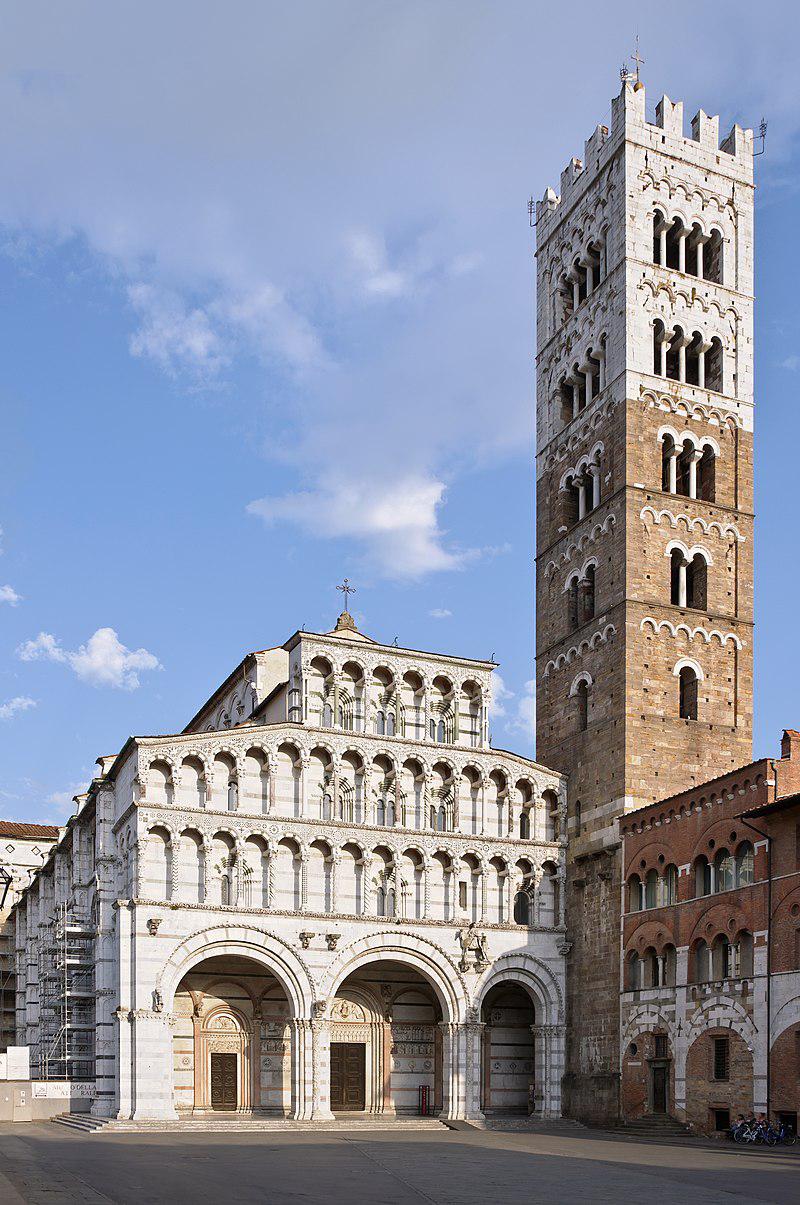
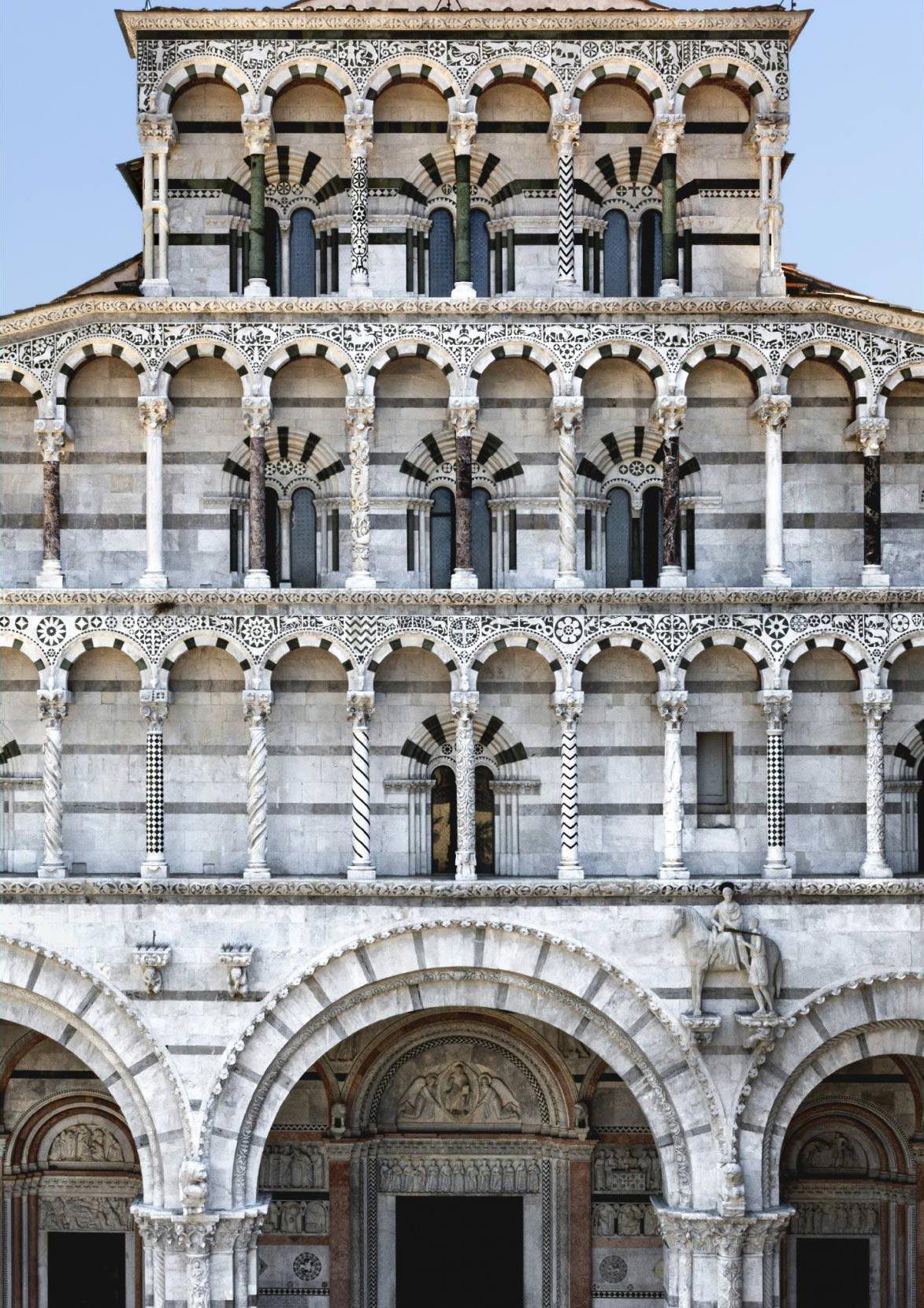
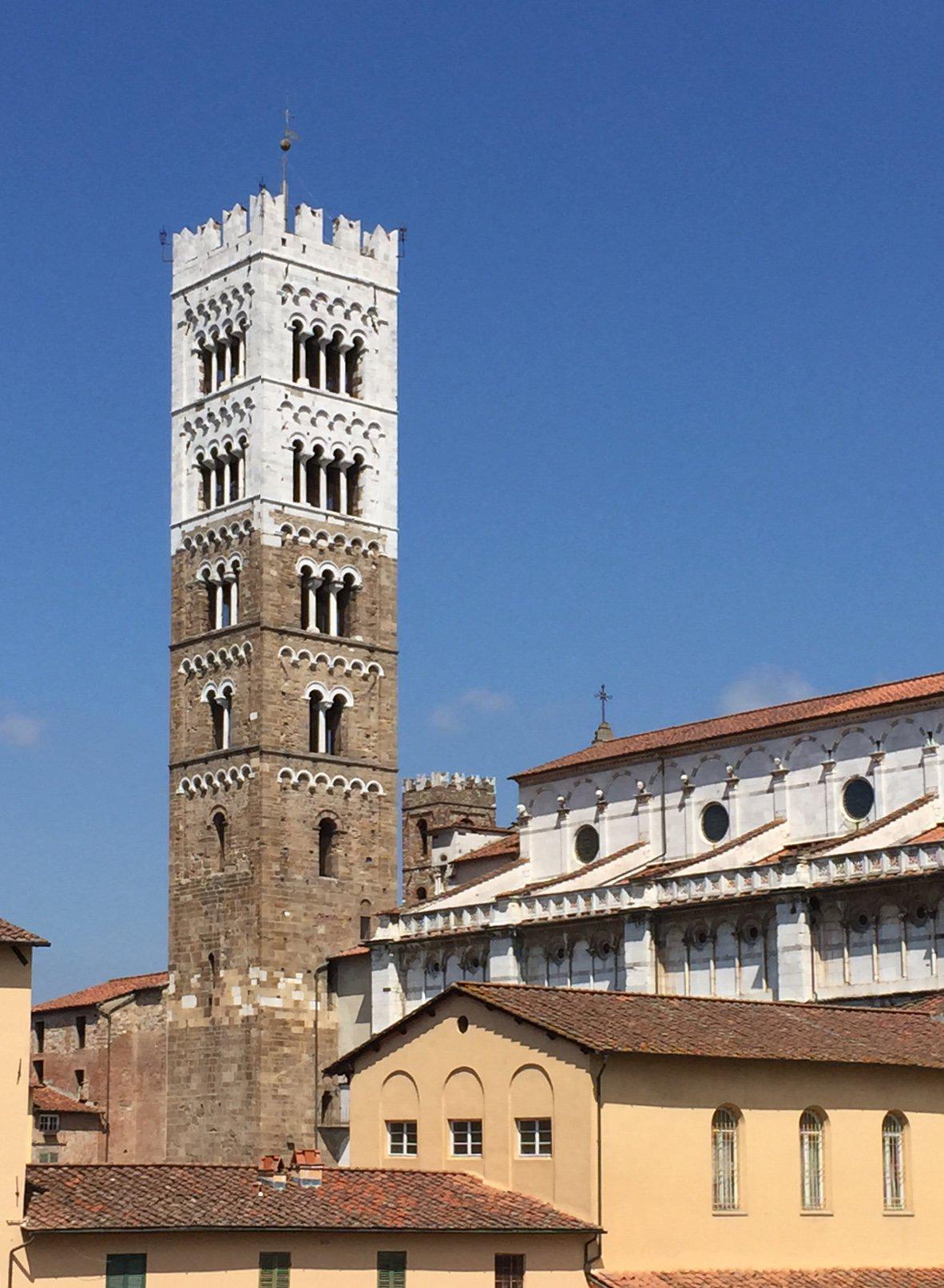
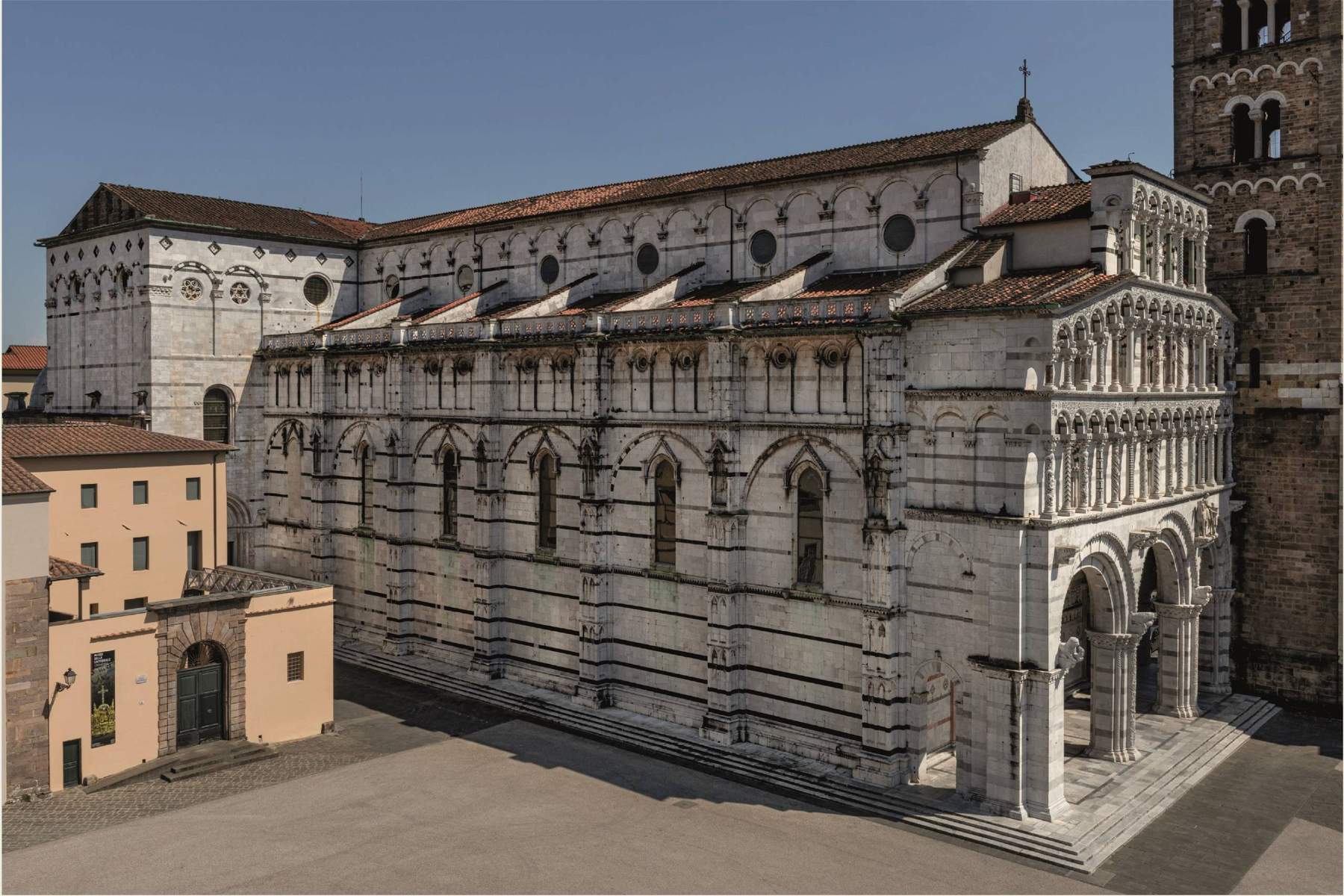
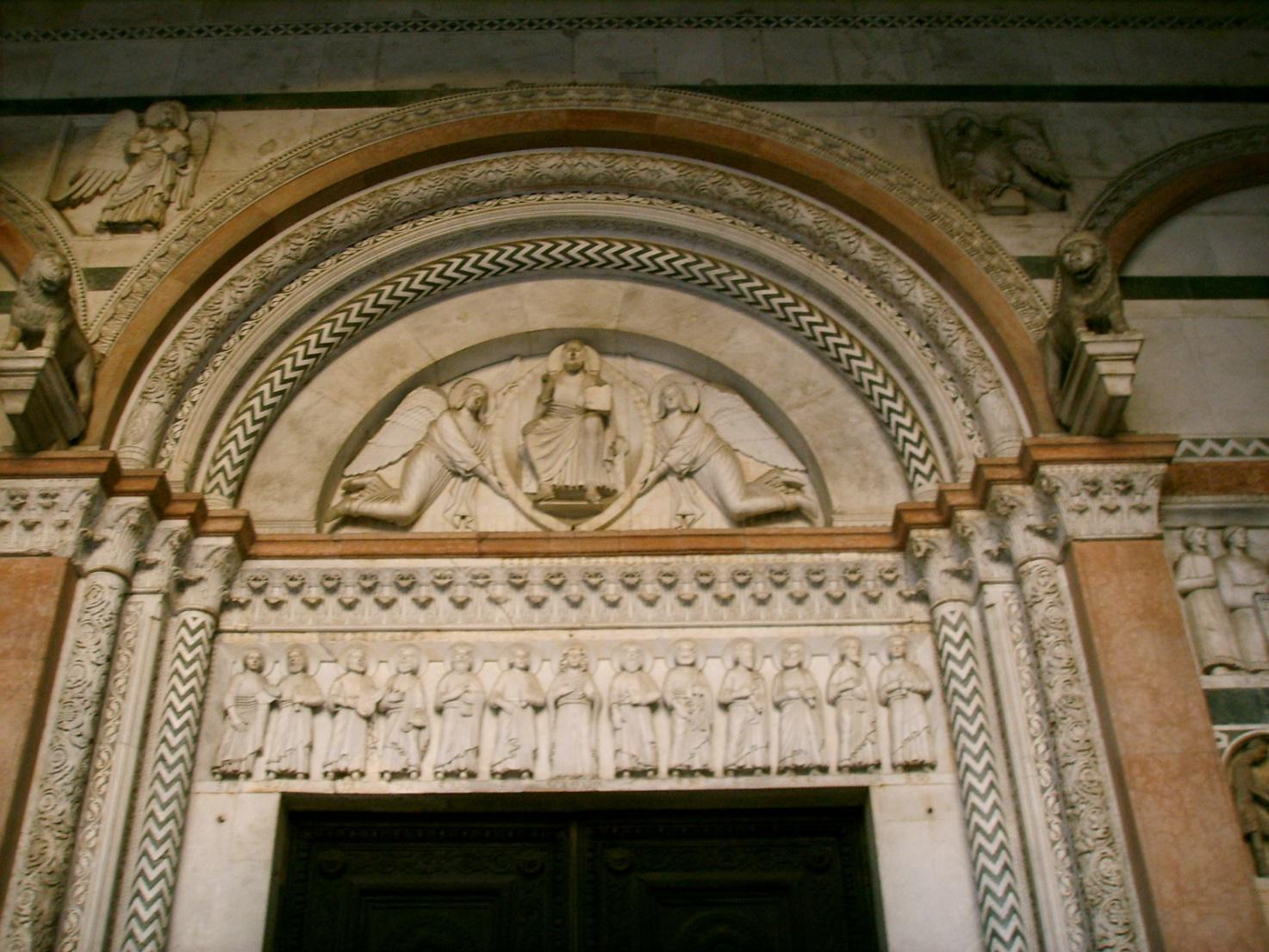
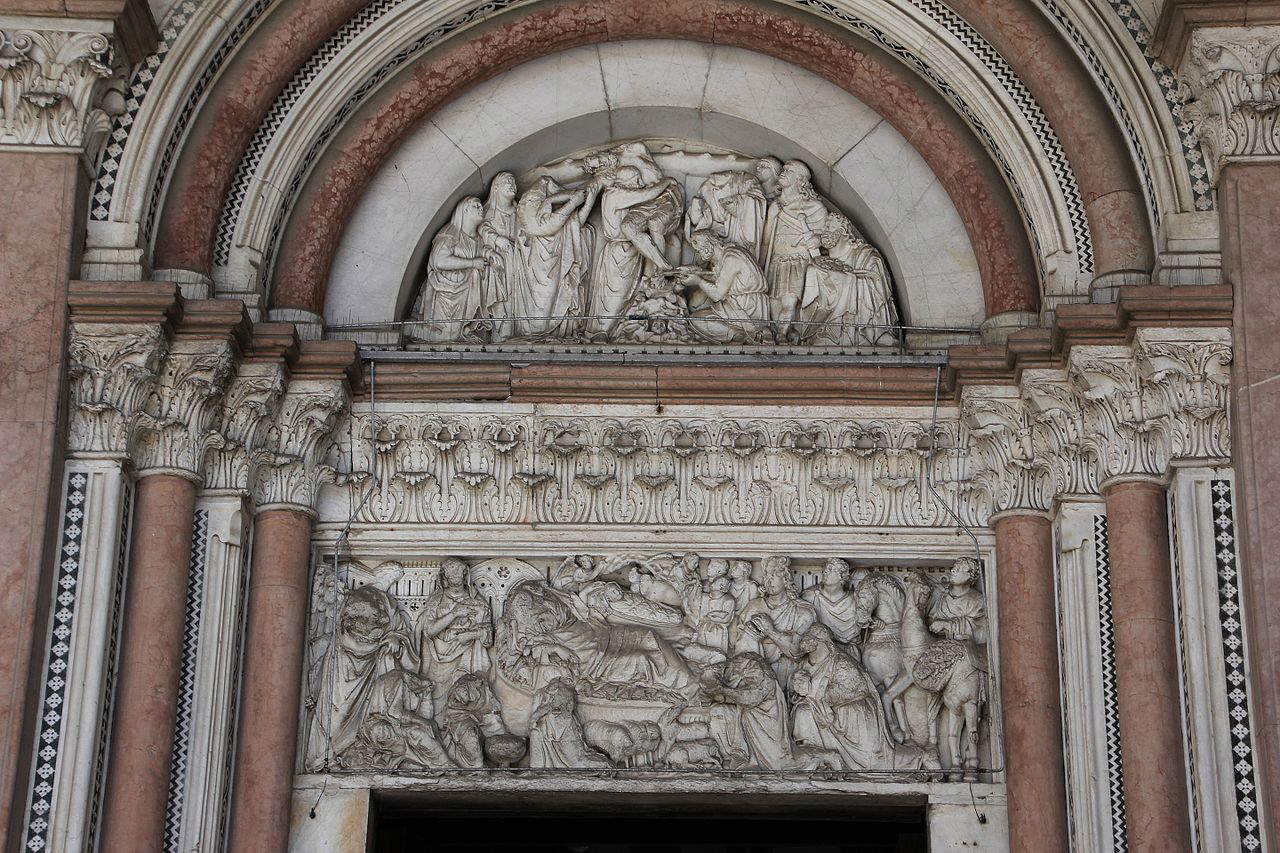

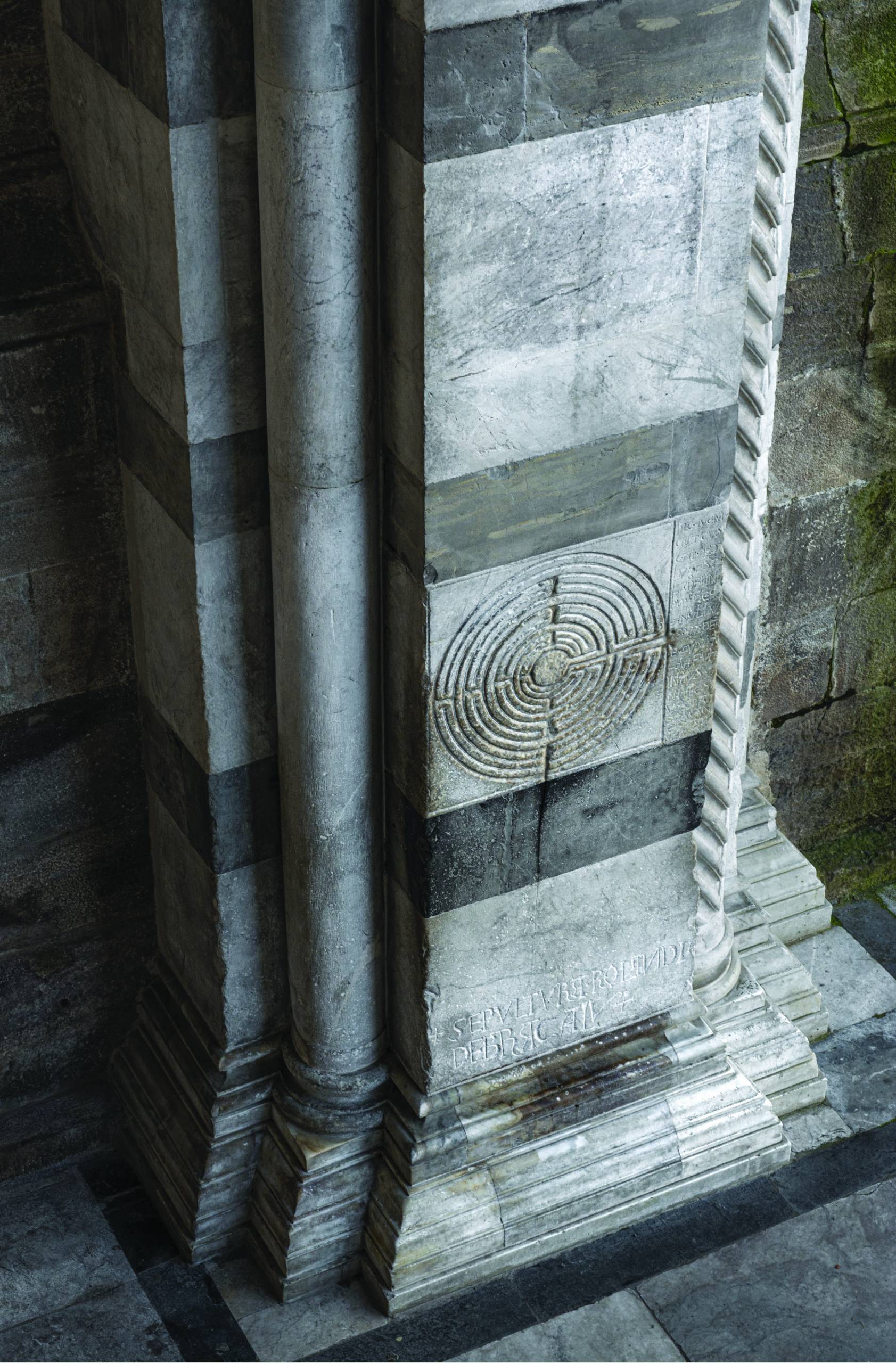
The facade facing Piazza San Martino has a portico with three large arches, the right one of which is considerably reduced, contrary to the principles of symmetry and balance characteristic of the architecture of the period, due to the proximity of the pre-existing bell tower. The arcaded atrium was used over the centuries to house spice sellers and money changers, as evidenced by an inscription urging money changers not to defraud customers. The upper portion of the façade is attributed to the bounty of Guidetto, as evidenced by the name of the sculptor effigyed on the front of the church, and with its four levels of loggias supported by a series of low blind arcades, it presents reminiscences of Pisa Cathedral. The extremely lively façade has a distinct individuality, each individual column differing from the others, and the inlaid decoration of the spandrels houses geometric motifs freely combined with animals and men.
Originally placed under the loggets, now moved inside the cathedral and replaced by a copy. The equestrian group featuring the cathedral’s titular saint. In fact, the group depicts St. Martin, bishop of Tours, an iconic figure of Christian antiquity, the perfect embodiment of the ideal of compassion, sharing and brotherhood. Immortalized in the statue is the episode, taken from the saint’s life, in which during a freezing winter, in an extreme gesture of pietas, the saint offers half of his soldier’s chlamys to a poor naked exposed . This magnificent statuary group, almost in the round, has the function of presenting the personage to the faithful; in fact, Martin does not look at the poor man, but at the faithful he finds before him. The author is unknown, but scholars agree that there is a close relationship between this between the author of this group and the workshop that made the east portal of the Pisa Baptistery.
Opening onto the loggia are the three portals of the cathedral. The one on the right is attributed to an anonymous Master of St. Regulus perhaps identifiable with Guidobono Guidarelli, to whom the lunette of the central portal and the symbols of the Evangelists are also attributed. They are representative of scenes from the saint’s life; in fact, the lunette features the Martyrdom. The reliefs of the central portal, with Christ blessing between two angels, and the architrave with the Virgin with Apostles, are attributed to the hand of Como sculptor Guido Bigarelli.
In 1257 Nicola d’Apulia, better known as Nicola Pisano, was hired to complete the decoration of the portals. For the decoration of the left portal, which opened onto the respective nave where, in a chapel, the Holy Face was kept, he produced the Deposition of Christ. He thus links up with the tradition that has Nicodemus, the one who deposed, by unhinging him, Christ from the cross, as the sculptor of the Holy Face. Below the lunette are scenes from the iconographic cycle of the nativity. The presence on the portal in addition to the deposition of episodes related to the birth of Christ, such as the Annunciation, the Nativity, and the Visitation of the Magi, makes it possible to place the baby Christ wrapped in swaddling clothes in direct relation to the dead and deposed Christ, as if to summarize the phrasesic natus et mortus. Regarding the dating of Nicola Pisano’s magnificent work, specialists have different positions, but the use of bichromatic marble, already present in the Pisa pulpit, and the treatment of the drapery, suggest a later date than the pulpit’s creation. A labyrinth, a symbol related to the theme of pilgrimage, also found in other churches along the Via Francigena, is carved on one of the stones of the pillar adopted to the bell tower. A Latin inscription refers to the myth of Theseus and Ariadne, but this symbol is often linked to the Templar order.
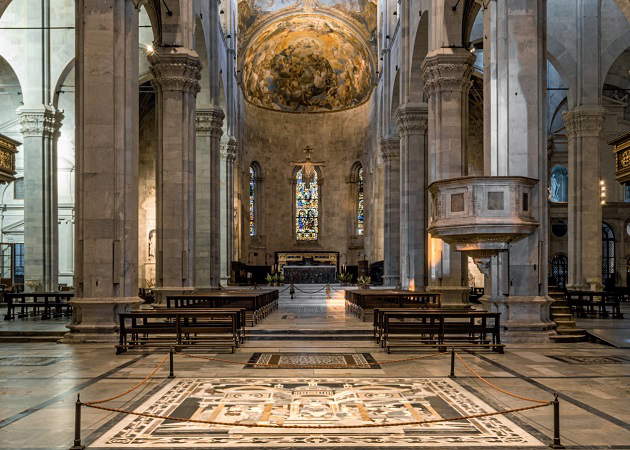
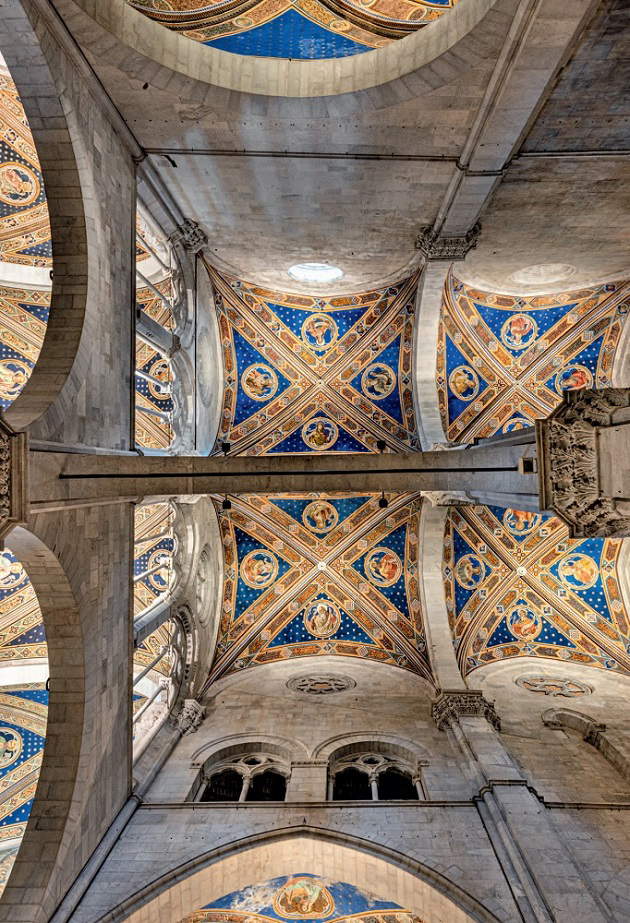
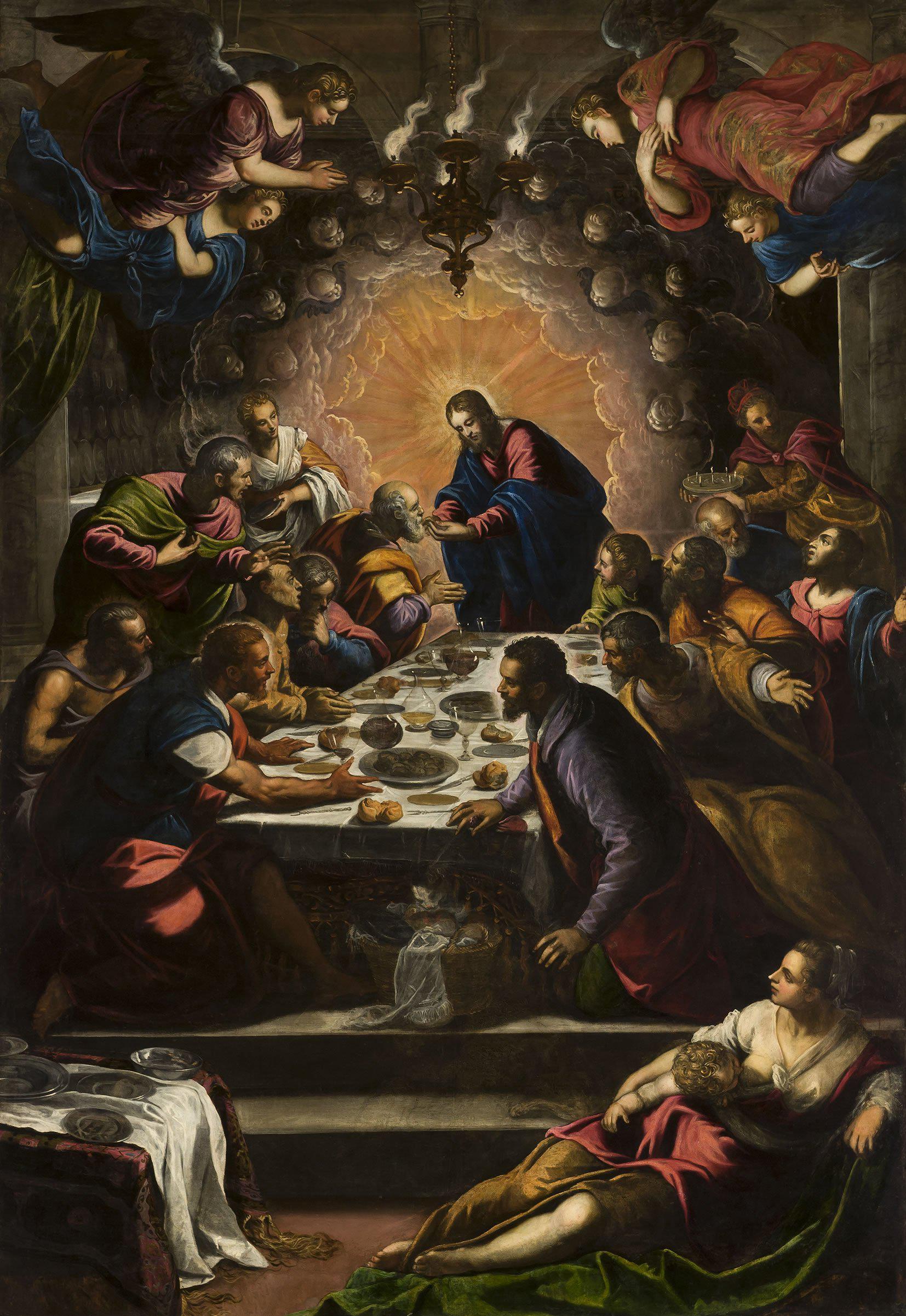
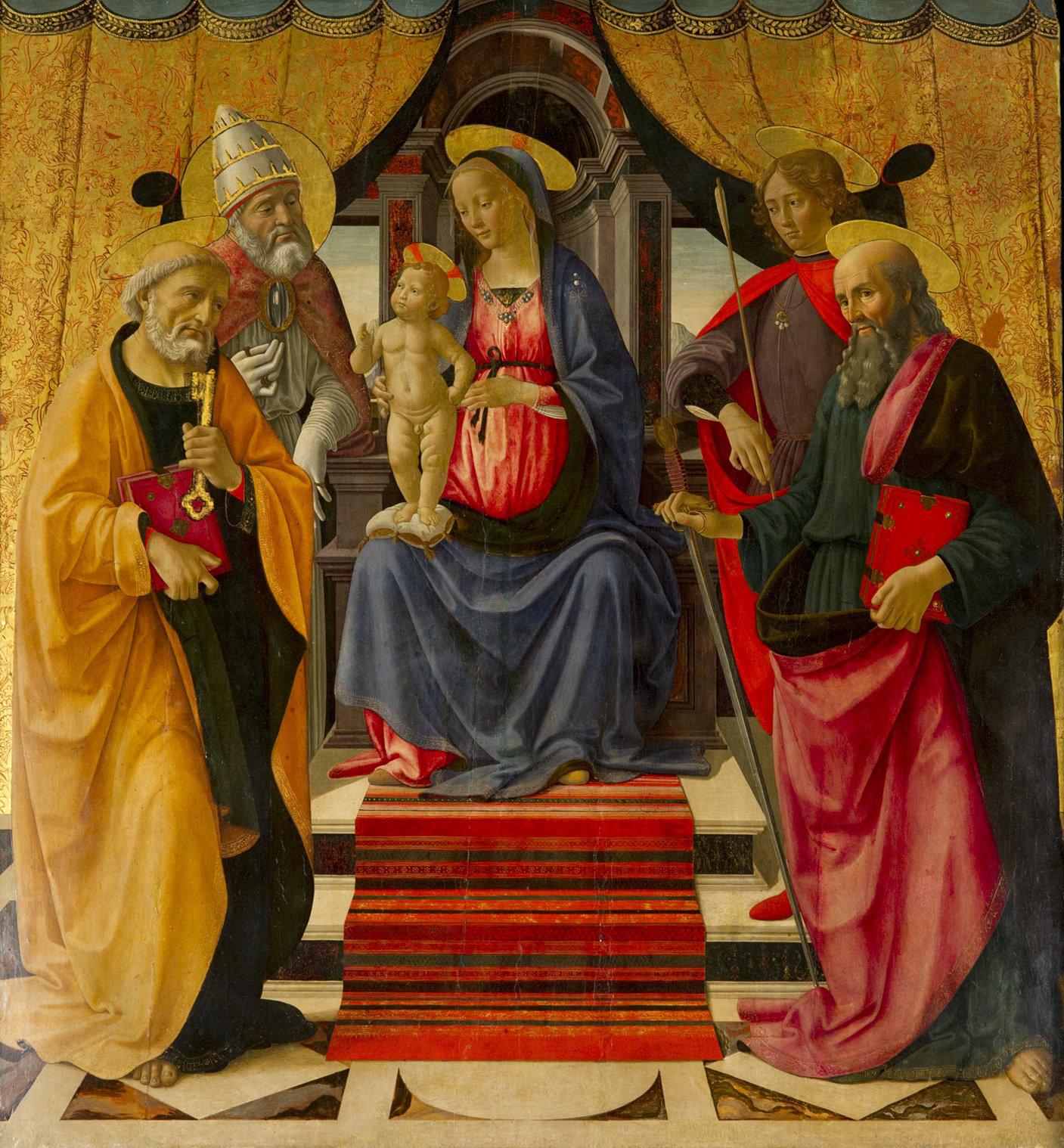
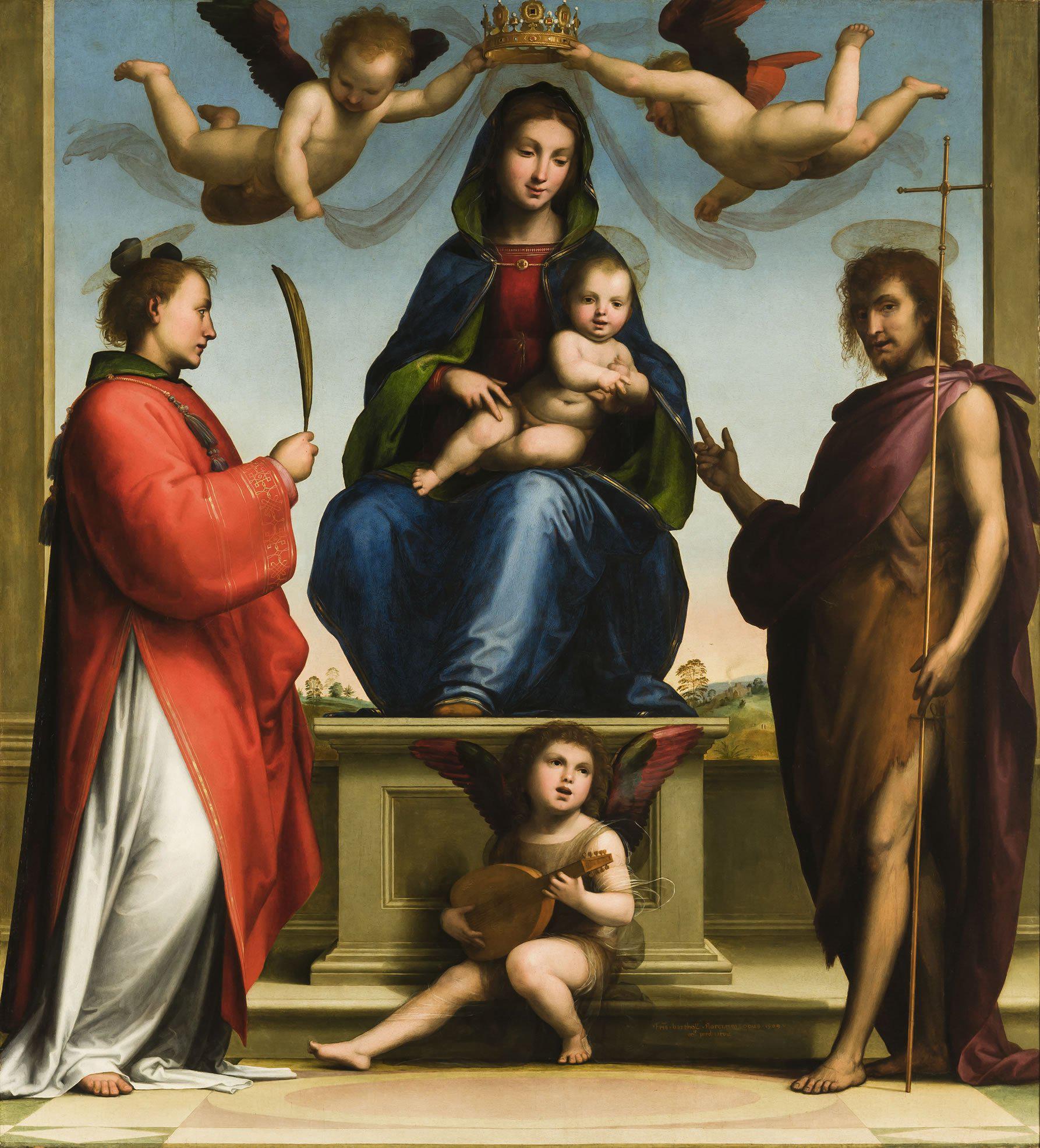
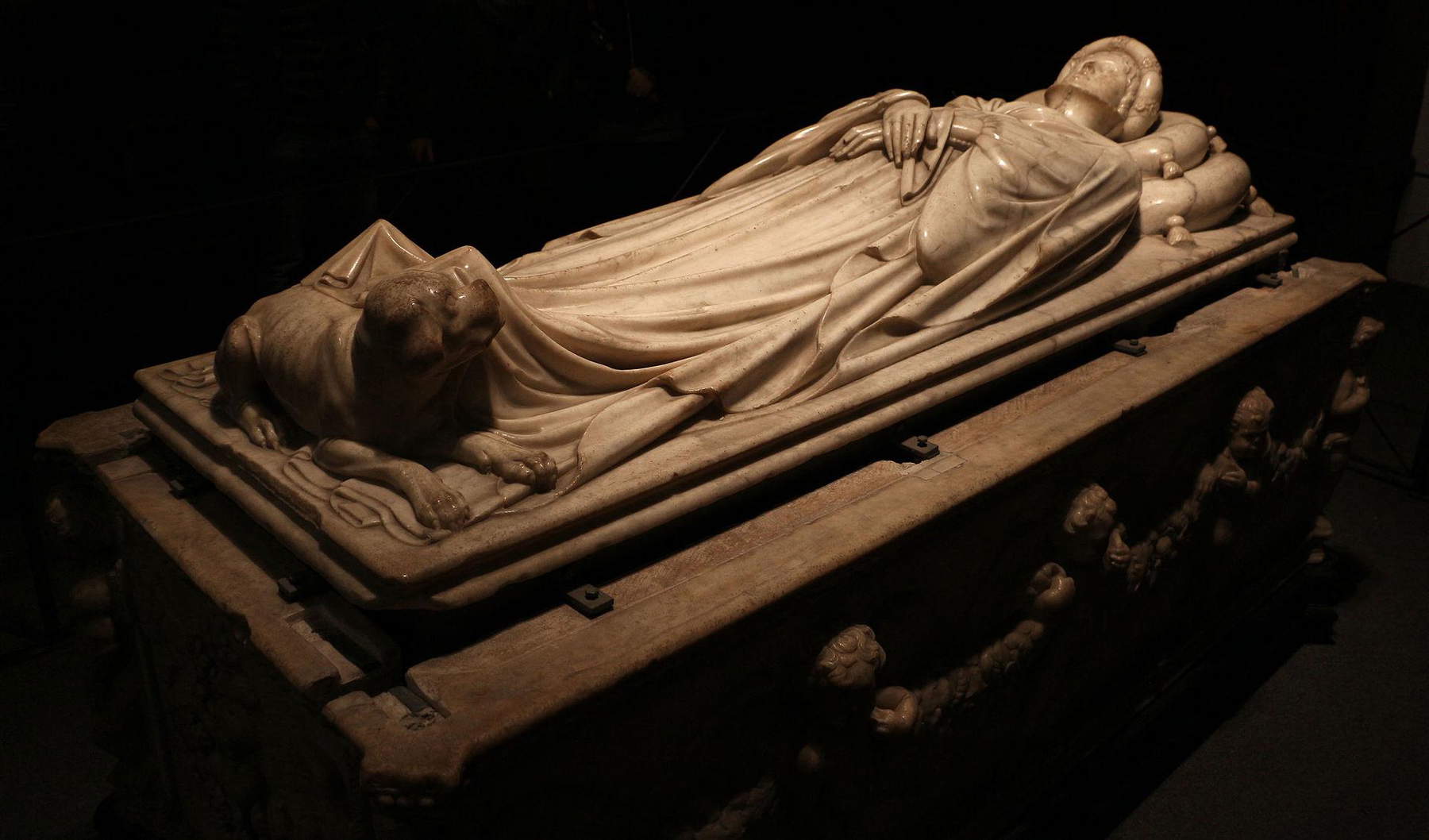
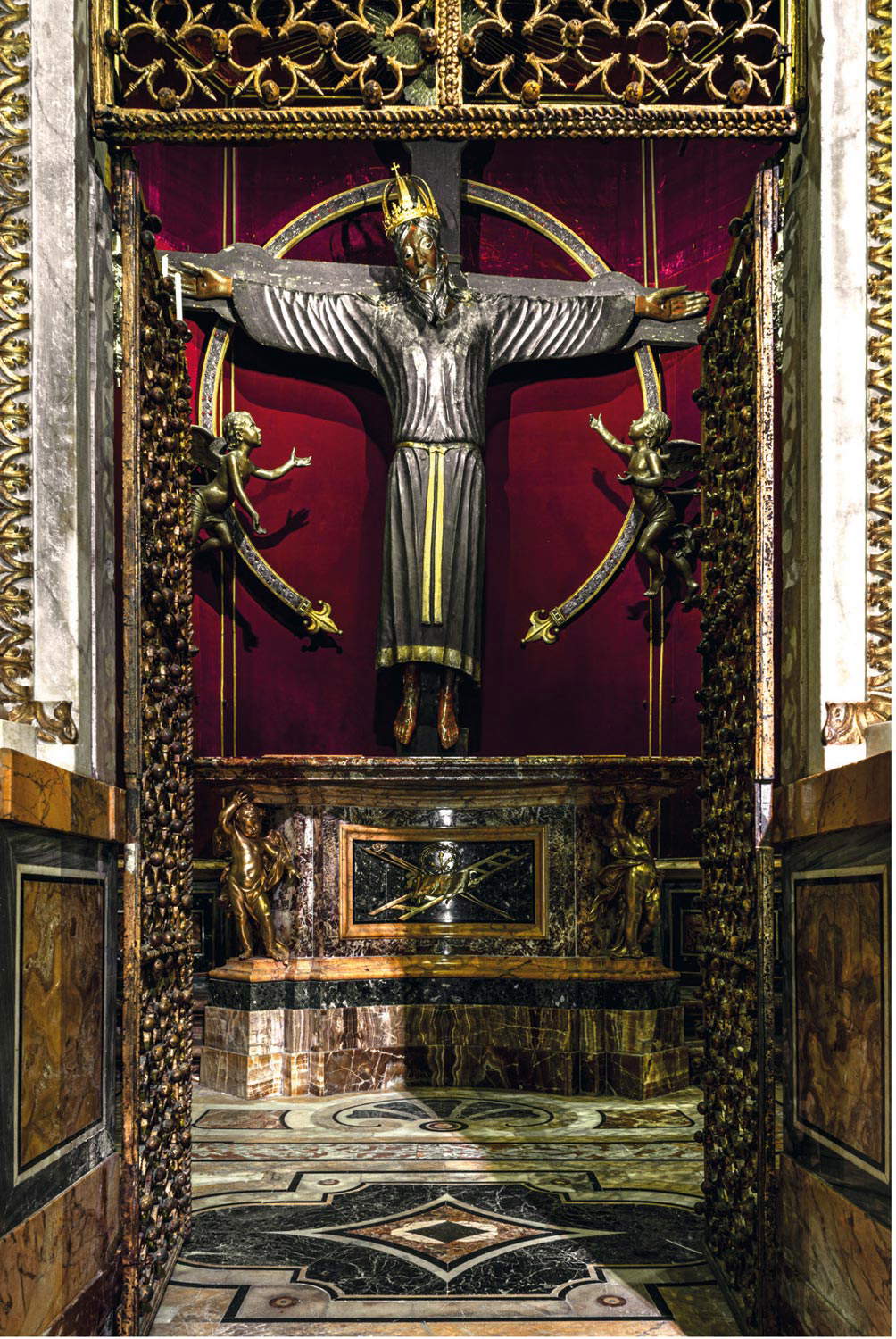
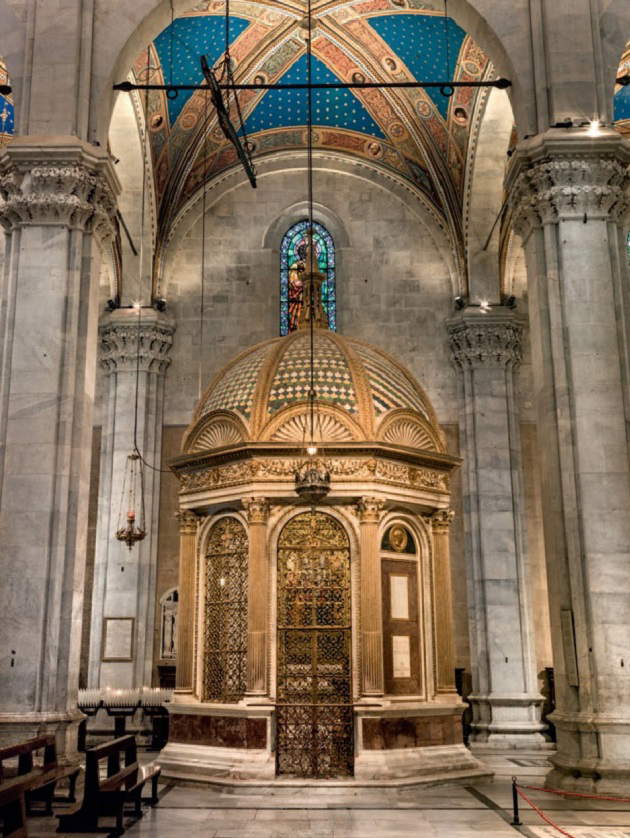
The interior of the church, which today has a Latin cross plan with three naves surmounted by cross vaults, contains numerous works of art, collected during the centuries of history experienced by the cathedral. On the first altar to the right isDomenico Passignano’s Nativity, while on the next altar is Federico Zuccari ’s painting of theAdoration of the Magi, made in 1598, coeval with Passignano’s work and Alessandro Allori’s Presentation in the Temple. A masterpiece by Tintoretto, the Last Supper, made in 1594 with the help of his son Domenico, is one of the last works by the artist before his death. Inside the cathedral you can admire the works of two great Florentine artists, the altarpiece made by Domenico Bigordi known as Ghirlandaio in 1479, with the Sacred Conversation, and the altarpiece by Fra Bartolomeo, dated 1509, with the Madonna and Child.
In the cathedral sacristy it is possible to admire a magnificent masterpiece of statuary, the Funeral Monument of Ilaria del Carretto, commissioned in 1406 by the lord of Lucca Paolo Guinigi from the sculptor Jacopo della Quercia. The monument is dedicated to the politician’s second wife, who died giving birth to his child when she was only twenty-six years old. The statue is sculpted with incredible realism, as is the sweet little dog at her feet, perfectly rendering all the beauty and elegance of the unfortunate maiden.
The oldest statue housed inside the cathedral, however, is the highly venerated relic of the Holy Face, placed chronologically around the end of the 8th century. Very important to the city, to the point of being effigyed even on coins, it was a pilgrimage destination from all over Europe. According to tradition, in fact, the statue was carved by Nicodemus, who out of respect would leave the face unfinished, later completed by a divine hand, and thus considered the face of the Savior. Placed inside the chapel created by Matteo Civitali in 1484, it is the object of immense veneration and fame, so much so that it was even mentioned by Dante Alighieri in hisInferno.
The Cathedral can be easily reached on foot, about ten minutes away from the station, or use the bus service. By car you can drive to the edge of the historic center, and then continue on foot. For schedules and ticket prices, you can go directly to the website.
Warning: the translation into English of the original Italian article was created using automatic tools. We undertake to review all articles, but we do not guarantee the total absence of inaccuracies in the translation due to the program. You can find the original by clicking on the ITA button. If you find any mistake,please contact us.